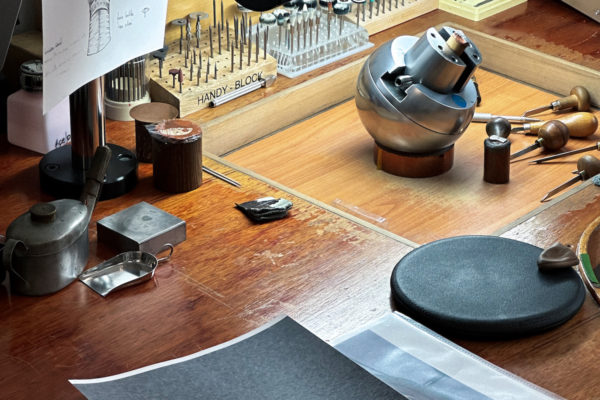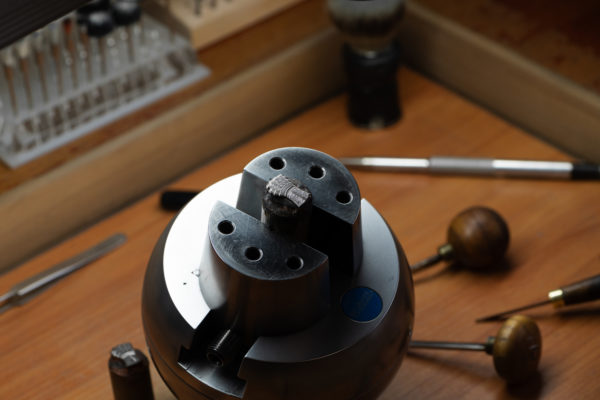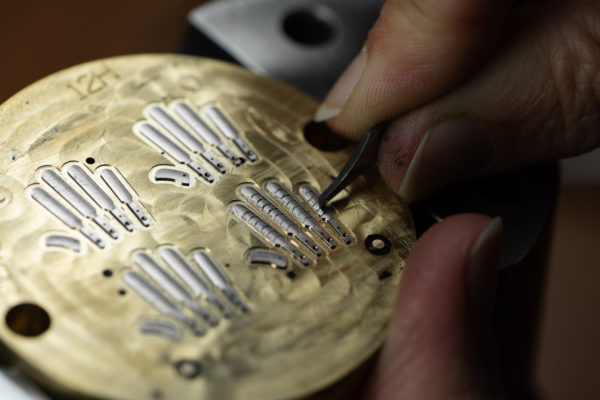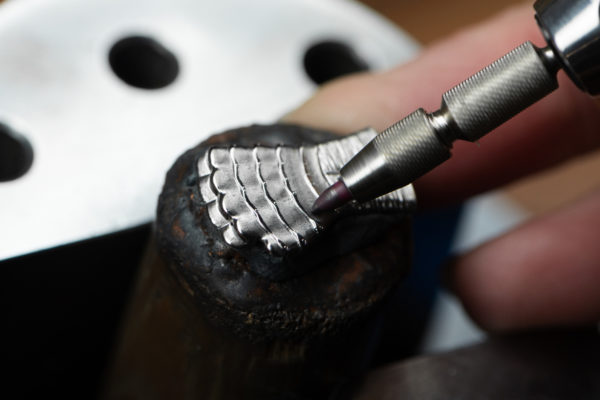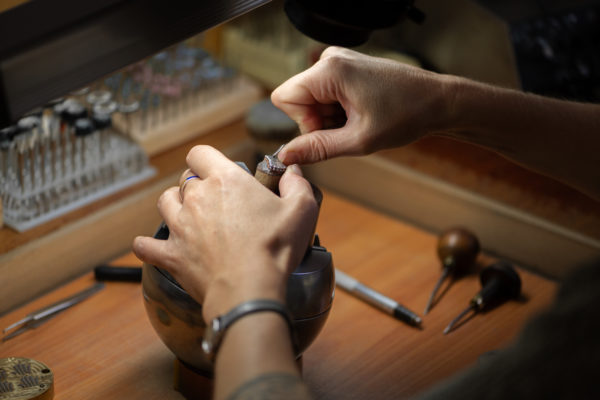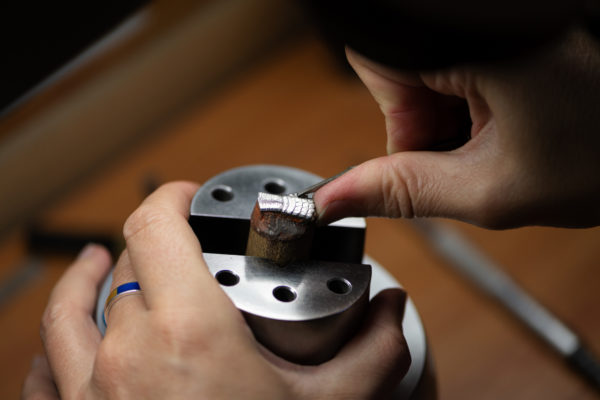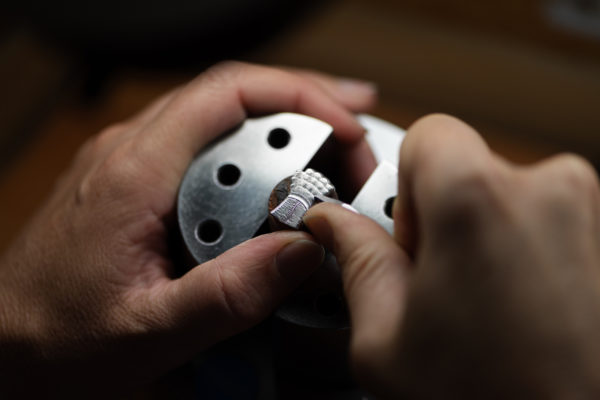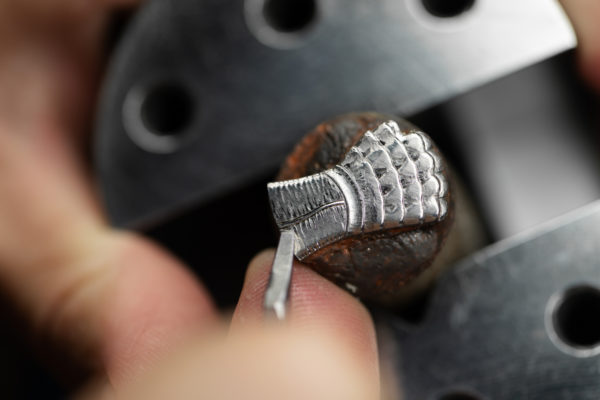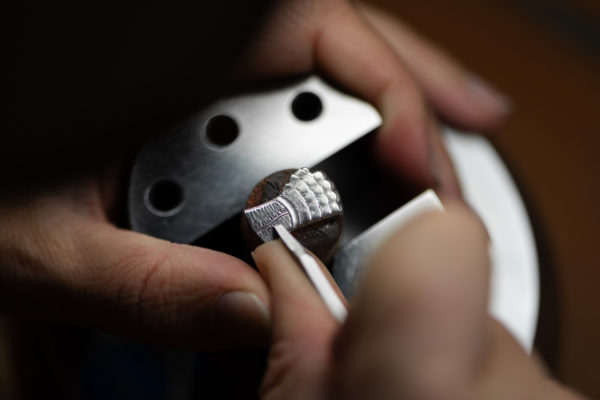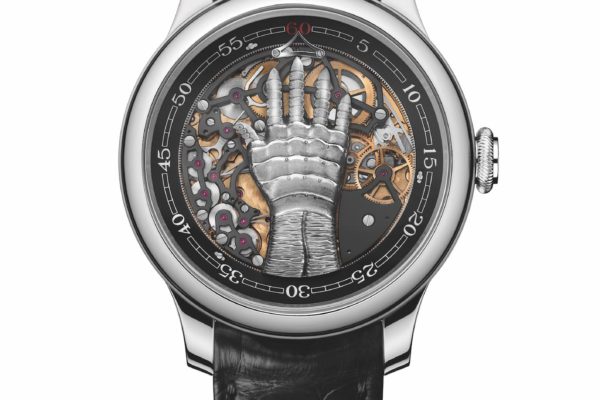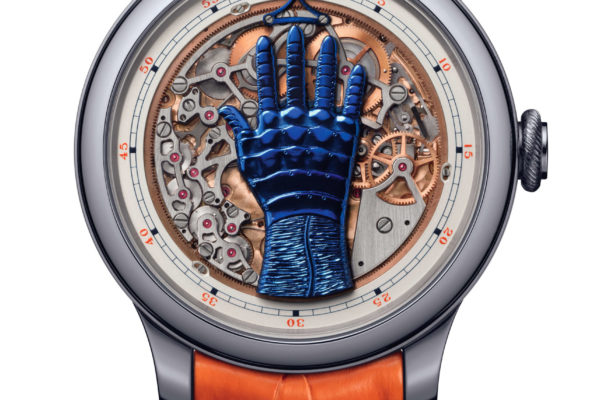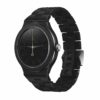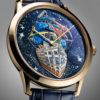The secrets of the hand that tells the time
In 2021, the prototype of the FFC Blue watch, designed by master watchmaker François-Paul Journe, fetched €4.5 million at the Only Watch charity auction. Two years later, this timepiece, in which the time is indicated instantaneously by an automaton hand, entered collections under the name FFC. But what secrets does this animated hand, engraved in trompe-l’œil, conceal? Visit the workshops where the material comes to life. Isabelle Cerboneschi
The first time I discovered the FFC Blue watch, or rather the prototype created for the 2021 edition of the Only Watch charity auction, I felt I had to solve a riddle. How do you tell the time on a dial that features both a rotating peripheral disc indicating the minutes and a blue titanium-gloved automaton hand indicating the hours? Never before have the words “digital time reading” been so appropriate, because it is the fingers – “digit” in Latin – that tell the time instantly. Two years later, this mind-boggling model finally entered the F.P.Journe collections.
But let’s return to the raison d’être of this watch. The idea came from the fertile mind of the American director, producer and screenwriter Francis Ford Coppola. It was during a dinner he hosted at his Napa Valley home in 2012, where he invited the master watchmaker. Because he is of Italian origin, and counting with the hands dates back to Roman times, the filmmaker asked François-Paul Journe if he could make a watch whose hours would be indicated by the fingers of one hand.

Counting with the fingers is not child’s play: it is a cultural and historical gesture. There is evidence of an accounting system using fingers as far back as the 3rd century BC. This method of calculation was theoretically explained by the Anglo-Saxon monk Bede the Venerable in the 8th century in his work Tractatus de computo, vel Loquela per gestum digitorum (Treatise on calculation or speech by finger gesture). Traces of this can be found on the sarcophagus of the Nine Muses, in the Louvre Museum in Paris, where a male figure gestures with his right hand towards a woman who is handing him a book. This hand is shown with the index and middle fingers extended, the ring, the little fingers and the thumb bent, turned to the inside of the palm. Without speaking or writing, the Romans were able to represent whole numbers, from units to millions. But the use of this ‘Comput digital’ has been lost, and so François-Paul Journe has not chosen this ancestral system to tell the time on his FFC Blue model.
After two years of reflection, the master watchmaker figured out how to solve the problem of a hand with only five fingers to indicate 12 hours and invented his own calculation system. “With two hands, you get to ten o’clock, not twelve. One morning, I woke up and discovered that the thumb was binary: closed, it represents zero, open, it represents 1”, explained François-Paul Journe when he presented his prototype to me some time before the sale.

Technically speaking, the FFC Blue is powered by the Octa 1300.3 calibre invented by the watchmaker in 2001, which works with a system of cams activating levers: one per finger. The complexity of this timepiece lies in the fact that sufficient power has to be applied to the cams to obtain a finger movement that indicates the time instantaneously. The secret? An auxiliary spring that winds up in 45 minutes thanks to the main barrel and delivers all the energy every hour. “The Octa movement arms an auxiliary spring that relaxes every hour to make the fingers move instantly. But it’s impossible to add return springs because we wouldn’t make any progress: there wouldn’t be enough force”, explains François-Paul Journe.
For the first time in the brand’s history, there are three names engraved on the watch’s balance wheel: F.F.Coppola, F.P.Journe, and Ambroise Paré, the famous sixteenth-century surgeon whose artificial iron hand inspired the automaton that indicates the hours.
The FFC Blue prototype, which had been estimated at between 300,000 and 400,000 francs, saw its estimate more than tenfold: on 6 November 2021, it was sold for 4.5 million at the Only Watch sale, more than twice the price of the Astronomic Souveraine prototype sold in 2019. An all-time record for an F.P.Journe watch. Two years later, in response to pressing demand from collectors and enthusiasts of the brand, despite (or perhaps because of) its pre-tax price of 820,000 francs, François-Paul Journe is bringing this model into the collections. It’s the perfect opportunity to go behind the scenes of this animated hand and discover its secrets.
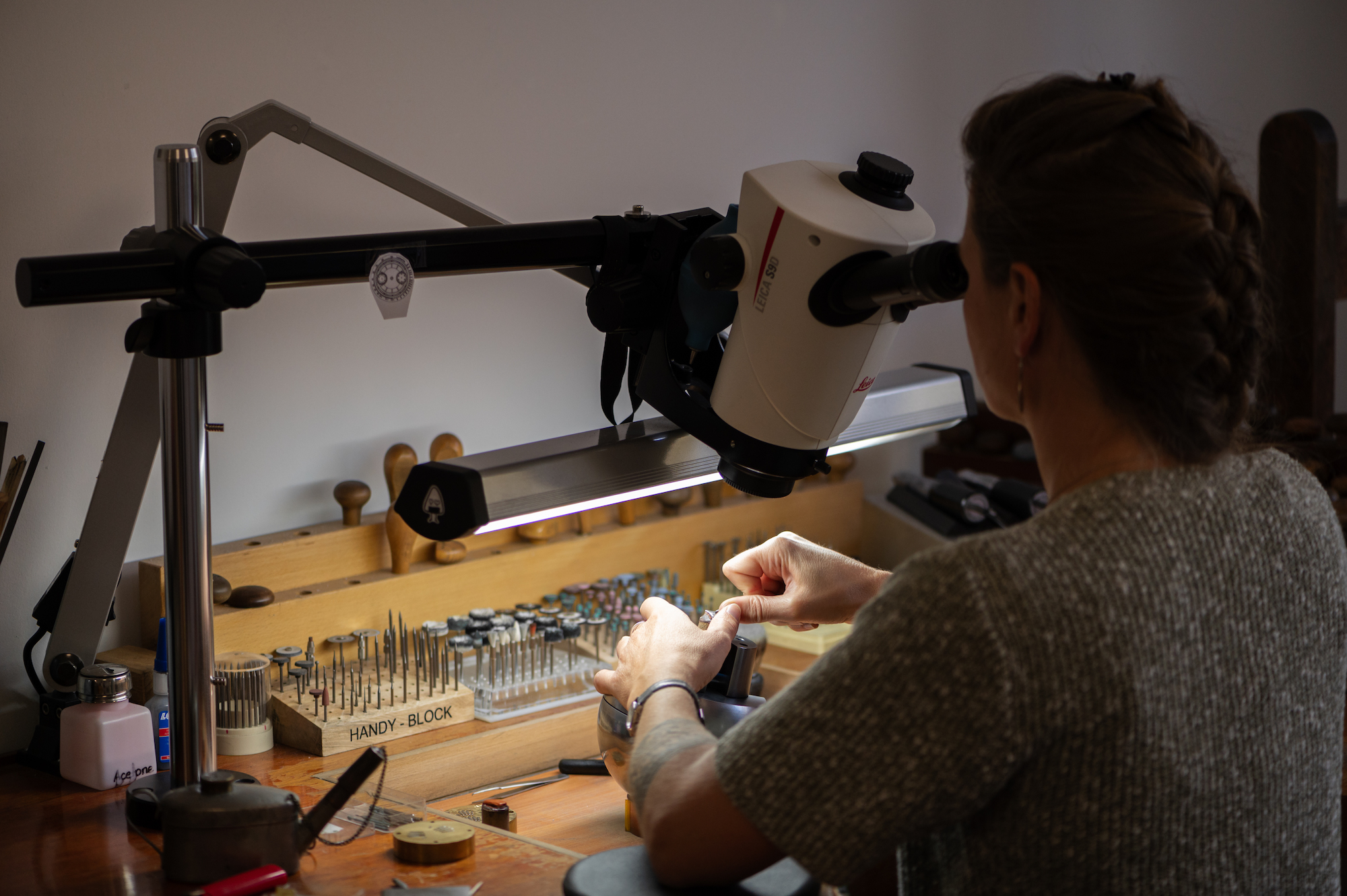
It is born in Meyrin, in the engraving workshop of Jeanne Valentine Ulrich, attached to the Cadraniers de Genève, owned by F.P.Journe. A few words about the artist first, before moving on to her work… Jeanne Valentine Ulrich did not come into the world of watchmaking by chance: her ancestors, the Lugrin Alfred family, were the founders of Lémania in 1884. But her love of this art cannot be explained solely by her lineage in the watchmaking industry: it is above all her passion for drawing and engraving that has led her in this direction.
In 2002, after completing her CFC in engraving at the Ecole d’Art Appliqué in La Chaux-de-Fonds, Jeanne Valentine Ulrich learned the intricacies of engraving – high reliefs, low reliefs, intaglio, patinas, textures, lettering, etc. – in a company thanks to the support of independent engraver Jean-Bernard Michel from La Chaux-de-Fonds. “I stayed there for 7 and a half years, but then I felt the need to take on a new challenge, so I joined a small subcontracting company through which I had the pleasure of working for a number of prestigious manufacturers and brands. This diversity was an asset”, she points out. And among her customers was François-Paul Journe. “The first model I worked on for him was the Tourbillon Souverain Régence Circulaire, 7 years ago”. Armed with a solid network and, above all, marvellous expertise, she chose to become independent in 2019.

It was to her that François-Paul Journe entrusted the task of creating the automaton hand for the blue titanium prototype. He has now done the same for the collector’s item, with a hand in matt titanium. A real challenge. “It took me a long time to understand the project,” she says. “François-Paul gives a lot of freedom to the craftsmen he chooses to work with. He sent me a plan of the rough parts of the hand as well as drawings of Ambroise Paré’s hand, which I used as inspiration for the sketch. Once the sketch had been validated, the project had to be transposed into an engraving. As the piece is very thin – the curved hand is hollowed out so that the five fingers can slide underneath – the difficulty lies in giving the illusion of thickness, when in fact it’s a trompe-l’œil.
At this point in the conversation, the craftswoman reveals some very small pieces, like tiny steel pancake spatulas measuring between 0.2 and 0.4 mm thick. These mini palettes are the supports for her imagination, which she engraves with highly contrasting shapes. The result looks like articulated fingers. When you look at this hand (which is only 2 mm thick) and its five articulated fingers, you get the impression that it has been engraved in bas-relief. Achieving the illusion of a third dimension is an art that Jeanne Valentine Ulrich has mastered to perfection.

« I gave the gloved hand a crumpled fabric effect to dress up the space and bring it to life,” she explains. « I did a lot of research before achieving this result”. Because all the elements are made by hand, each watch is a unique piece, because it is impossible to reproduce the same gesture twice. To make a hand, Jeanne Valentine Ulrich spends many hours engraving the small elements that make it up.
When asked what she liked about this project, the craftswoman replied: “François-Paul makes projects that are like no other. It takes us into a new and surprising universe. He gives us his idea and leaves us a lot of freedom to interpret it. And I love watching the time change on the watch he wears on his wrist: when your fingers move, it’s magic!
To date, there are many firm orders for this timepiece, which is a concentration of what François-Paul Journe has mastered so well since the beginning: the expression of unrivalled watchmaking expertise combined with the culture and history of mechanical engineering. Not forgetting the surprise effect: the master watchmaker never creates what you might expect of him. He is content to let his mind guide him into unexplored territory.


